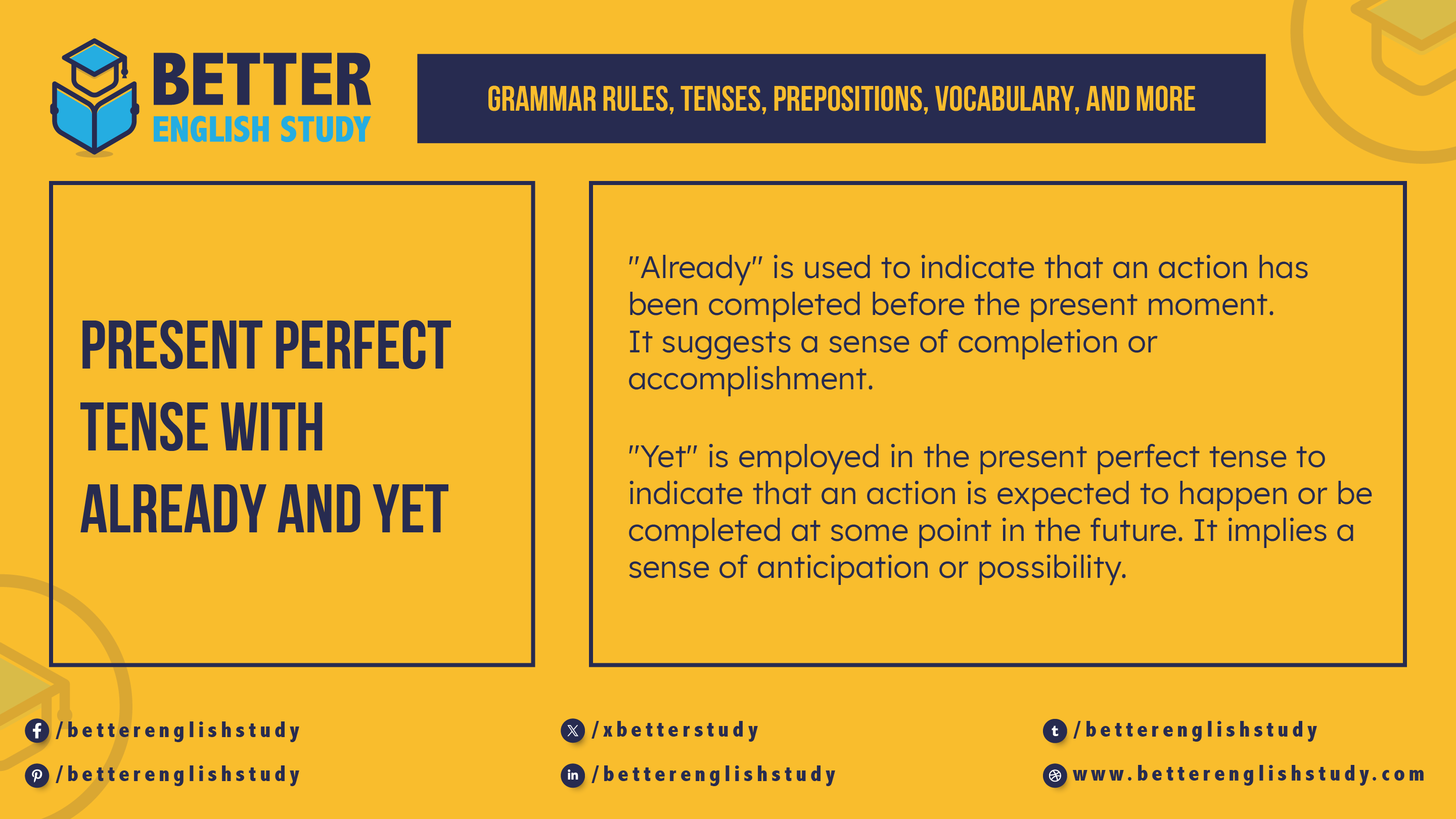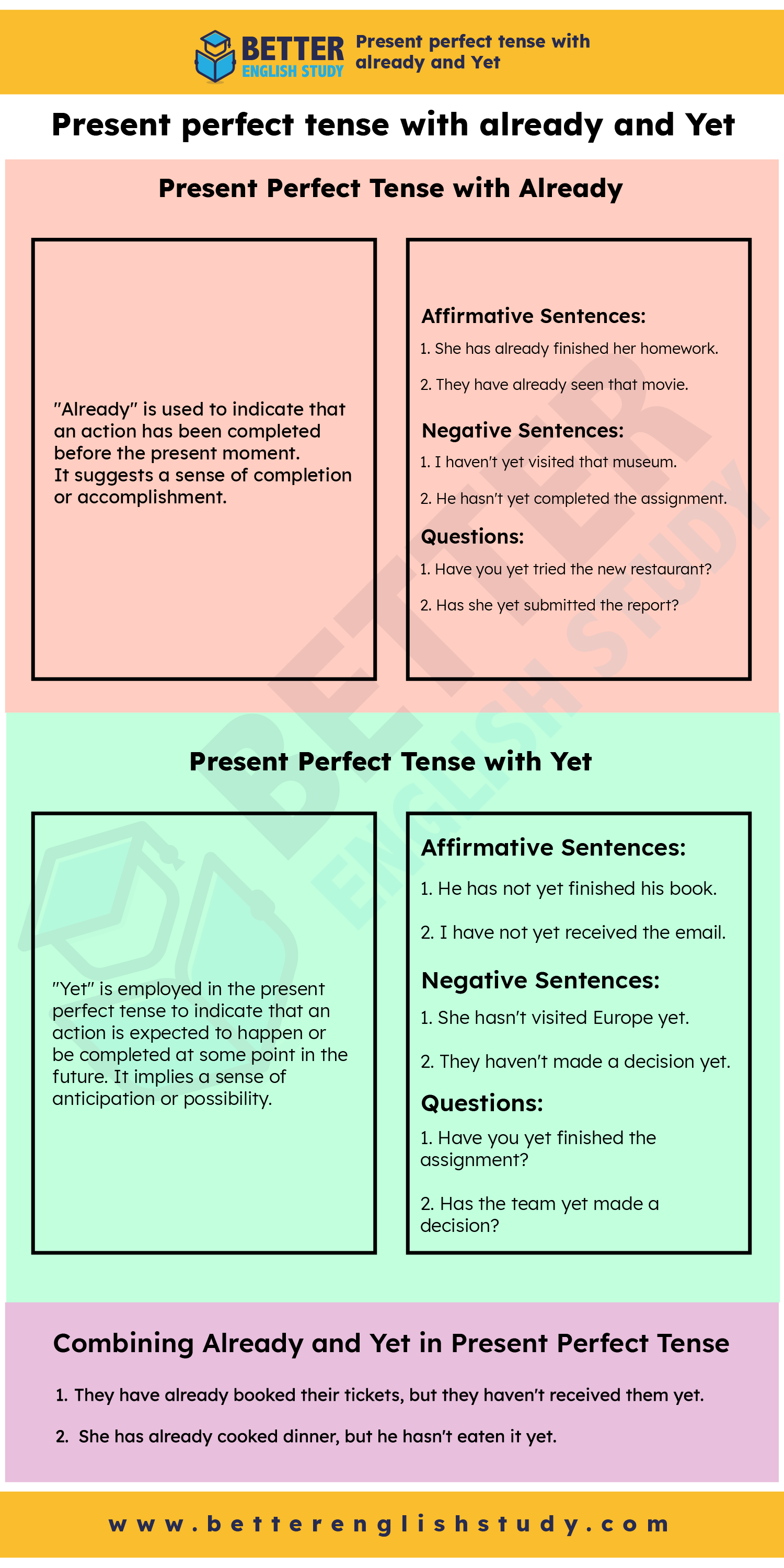
Exploring the nuances of the present perfect tense involves diving into the intricacies of time expressions such as “already” and “yet.”
In this comprehensive guide, we will unravel the complexities of using these elements in the present perfect tense, providing clarity for learners and writers and enhancing their proficiency in English grammar.
Present Perfect Tense with Already
In the present perfect tense, “already” is used to indicate that an action has been completed before the present moment. It suggests a sense of completion or accomplishment. Let’s delve into some examples to understand its usage:
Affirmative Sentences:
- She has already finished her homework.
- They have already seen that movie.
In these sentences, “already” emphasizes the completion of the homework and the act of seeing the movie, placing the actions in the past with relevance to the present.
Negative Sentences:
- I haven’t yet visited that museum.
- He hasn’t yet completed the assignment.
In these negative sentences, the use of “yet” conveys that the actions of visiting the museum and completing the assignment have not occurred up to the present moment, emphasizing the anticipation or possibility of them happening in the future.
Questions:
- Have you yet tried the new restaurant?
- Has she yet submitted the report?
In these questions, the inclusion of “yet” emphasizes the anticipation or possibility of trying the new restaurant and submitting the report, making it clear that the actions are expected to happen in the future.
Present Perfect Tense with Yet
Conversely, “yet” is employed in the present perfect tense to indicate that an action is expected to happen or be completed at some point in the future. It implies a sense of anticipation or possibility. Let’s explore its usage:
Affirmative Sentences:
- He has not yet finished his book.
- I have not yet received the email.
In these affirmative sentences, the use of “yet” emphasizes the expectation or anticipation of the actions (finishing the book and receiving the email), suggesting that they are anticipated to happen in the future.
Negative Sentences:
- She hasn’t visited Europe yet.
- They haven’t made a decision yet.
In these negative sentences, the placement of “yet” maintains the emphasis on the actions not having occurred up to the present moment, but it leaves room for the possibility or anticipation of them happening in the future.
Questions:
- Have you yet finished the assignment?
- Has the team yet made a decision?
In these questions, the inclusion of “yet” emphasizes the expectation or anticipation of the completion of the assignment and the decision-making by the team, suggesting that these actions are anticipated to happen in the future.

Combining Already and Yet in Present Perfect Tense
It is important to note that “already” and “yet” are often used in combination to convey a comprehensive understanding of the timeline of actions. Consider the following examples:
- They have already booked their tickets, but they haven’t received them yet.
- She has already cooked dinner, but he hasn’t eaten it yet.
In these examples, “already” emphasizes the completion of the first action, while “yet” underscores the anticipation of the second action.
Mastering “already” and “yet” in the present perfect tense adds depth to your language skills. These time expressions help convey not just the completion of actions but also the anticipation of future events, allowing for precise and nuanced communication in both written and spoken English.
